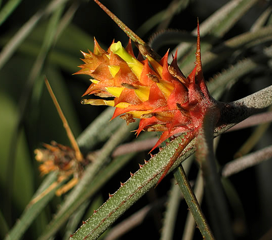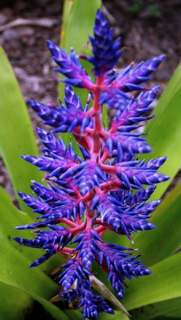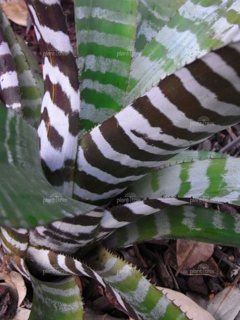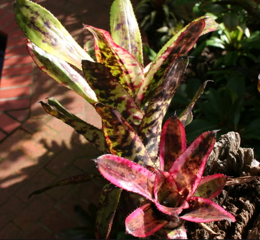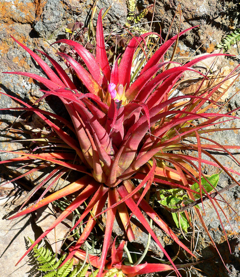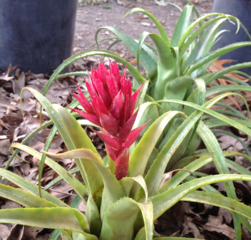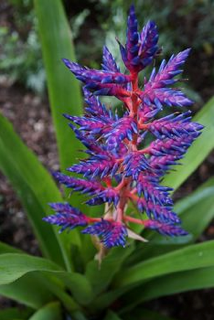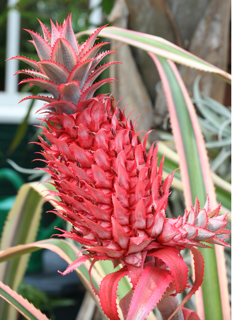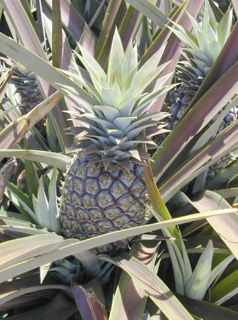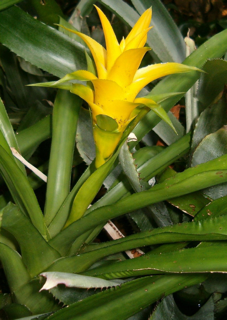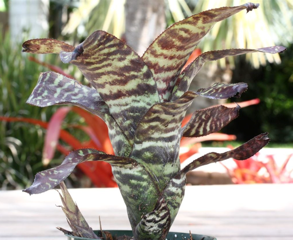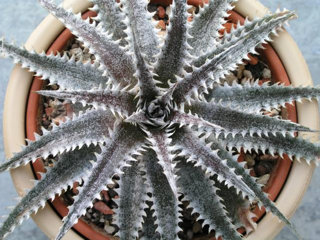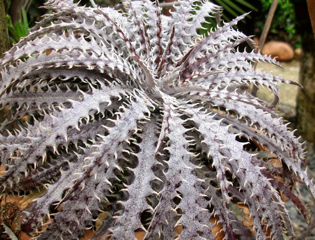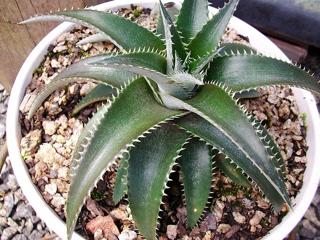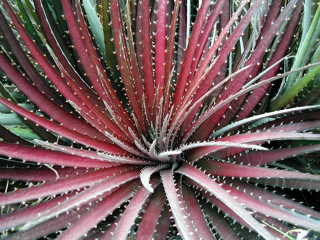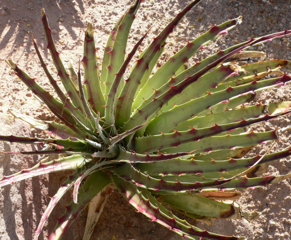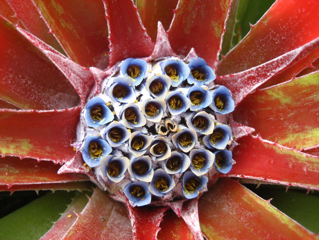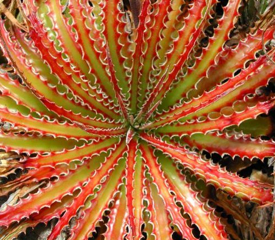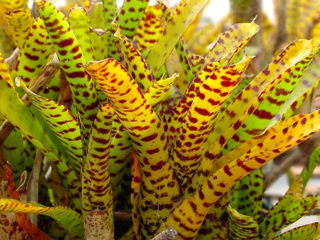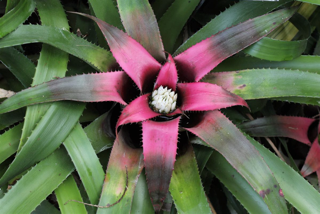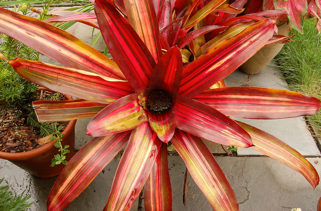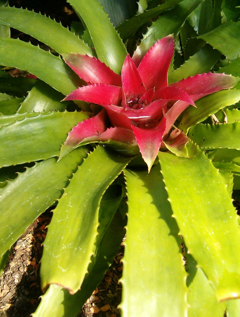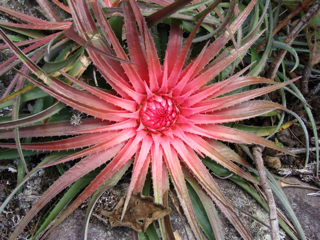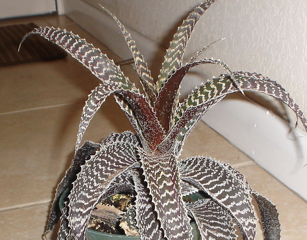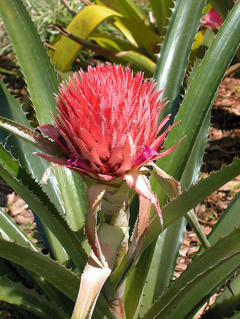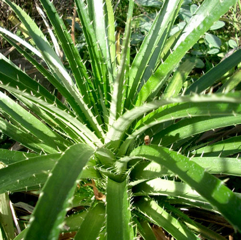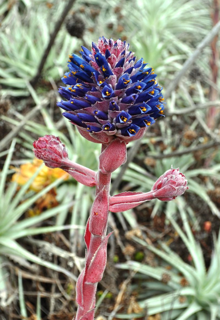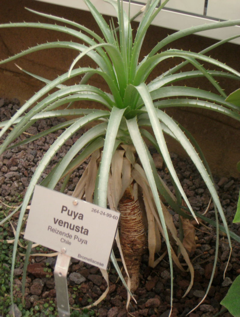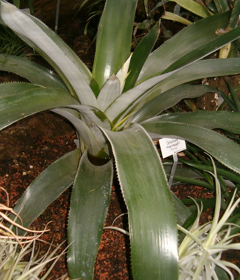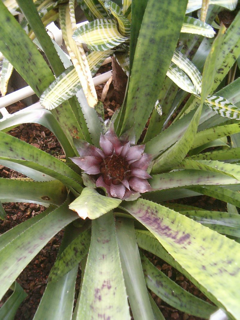Submitted by: Jim Tanner
The Bromeliads, like Cacti and Agavaceae are a New World family. Like the Cacti they have evolved to cover a range of environments, from the Coastal Mountains of Chile, to the plains of Argentina, to the Amazon, the dry scrub and Montane forests of Brazil, all of Central America and Mexico, the off-shore Islands, and even the temperature regions of Argentina and the United States.
There are at least three regions where gradual climatic change forced some Bromeliad genera (and some species of other genera) to become succulent. The best known of the succulent genera are Dyckia, from Brazil and the surrounding countries, Puya, which are mostly Andean plants, Hechtia, largely confined to Mexico, and the Tillandsia, which inhabit regions from Virginia to Argentina. However there are some spectacular succulents in other genera as well.
Dyckia and Hechtia have similar cultural requirements, even though they are a hemisphere apart. Both like well draining soil. Most species can tolerate some cold, and light frosts are generally not a problem. A heavy frost will cause some tip damage, but is usually not fatal. They can take full sun when planted in the ground, but prefer some protection from the worst of the heat during the day.
Dyckia has been extensively hybridized, and choice cultivars have been selected from some of the more showy species. Bill Baker, well known to many club members, was one of the best hybridizers. Dyckia is also the best behaved of all of the succulent genera, some of the other genera can be aggressive spreaders, producing many offsets, but taking up more room than the average grower can tolerate.
A less known genus with a significant number of succulent species is Orthophytum. This genus comes from Brazil, and the genus for the most part occupies a warm and humid environment. Many of the Orthophytum are spectacularly flocked with special cells (trichomes) that pull moisture directly out of the air. Bands of trichome rich and trichome poor regions on the leaves give these plants a spectacular coloring. As with Dyckia, there are a wealth of hybrids, with many be created in Florida, which is really more to their liking than the dry inner valleys of California.
Another succulent genus is Puya, largely to the Andes, and with the largest number of species on the Western side of the mountains. Many of the Puya species are gigantic, some reaching tree-like dimensions before flowering. Others can be kept in a pot, at least for a few years. Many Puya have leaves that carry seedling leaf impressions, much like the Agave.
LATIN LOOKUP – Loquerisne Latine (Do you speak Latin)?
The meanings of latin plant names on this page – from http://davesgarden.com/guides/botanary/
- Acanthostachys [a-kan-tho-STAK-iss, a-kan-tho-STAY-kiss]
From the Greek kantha (thorn) and stachys (spike); the flower spikes are spiny. - Aechmea [EEK-mee-uh, EK-mee-uh]
From the Greek aikhme, meaning point of a spear. - amoenum [am-oh-EN-um]
Delightful. - ampullacea [am-pul-uh-KEE-uh, am-pul-uh-SEE-uh]
Flask-shaped. - Ananas [A-nan-as, AN-uh-nus]
Pineapple. - bicolor [BY-kul-ur]
Of two colors. - bracteatus [brak-tee-AY-tus]
Having bracts (modified leaves directly beneath the flower). - Canistrum [kan-NIS-trum]
From the Latin canistrum, (basket), referring to the cluster of flowers appearing as a flower basket. - chantinii [chan-tee-nee-ee]
For Antoine Chantin, 19 th century french horticulturist . - comosus [kom-OH-sus]
Hairy. - Dyckia [DY-kee-uh, DIK-ee-uh]
Named for Prince Joseph Salm-Reifferscheid-Dyck, 19th century botanist and author of book on succulents. - estevesii [es-teh-VEZ-ee-eye]
Named for Eddie Esteves Pereira, 20th century Brazilian researcher and cactus collector. - Fascicularia [fas-sik-yoo-LAR-ee-uh]
Banded, bundled. - fosteriana [fos-ter-ee-AY-nuh]
Named for Mulford Bateman Foster, 20th century American horticulturist who provided many specimens to the botanist Lymen B. Smith. - fulgens [FUL-jenz]
Shining, shiny. - Guzmania [guz-MAN-ee-uh]
Named for Anastasio Guzman, an 18th century Spanish naturalist. - Hechtia [HEK-tee-uh]
Named for Julius Gottfried Conrad Hecht, 19th century counsellor to the King of Prussia. - macedoi [ma-SAY-do-eye]
Named for Amaro Macedo, 20th century Brazilian botanist and collector. - mirabilis [mih-RAB-ih-liss]
Wonderful. - Neoregelia [nee-oh-reg-EL-ee-uh, nee-oh-re-JEE-lee-uh]
New Regelia (genus named for Eduard August von Regel, 19th century German botanist superintendent of the botanic garden at St. Petersburg, Russia). - Nidularium [nid-yoo-LAY-ree-um]
From the Latin nidus (nest); referring to the short cluster of inner leaves surrounding the flower. - Orthophytum [orth-oh-FY-tum]
Straight plant. - pendula [PEND-yoo-luh]
Pendent, hanging. - platyphylla [plat-TY-fil-uh]
Broad leaved. - Pseudananas [soo-do-AN-a-nas]
From the Greek pseudo (false) and Ananas (pineapple genus). - Puya [POO-yuh]
The Chilean vernacular name. - recurvata [rek-er-VAY-tuh]
Bent backwards. - remotiflora [re-mo-tee-FLOR-uh]
Flowers apart from each other, presumably on stems. - scariosa [ska-ree-OH-suh]
Thin, dry, shrivelled. - strobilacea [stroh-BIL-uh-say]
Cone-like. - tricolor [TRY-kull-lur]
Three color. - venusta [ven-NUSS-tuh]
Beautiful, charming.
